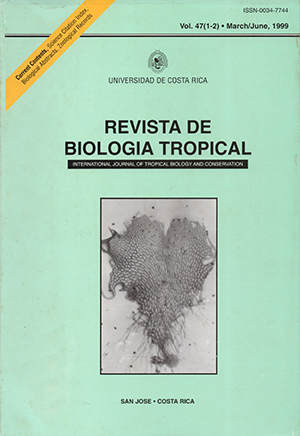Abstract
Three Didelphis marsupialis were radio tracked during late dry season (23 February-26 April, 1983) in agricultural area at 1500 m elevation in Central Valley, Costa Rica. All animals were nocturnally active, significantly more so between 2100-0300 h. Fifty diurnal den site locations were found, 96% inside tree cavities in living fence rows or abandoned squirrel nests in windbreaks. Two females occupied 3.4 and 3.1 ha 95% home ranges, moving an average 890 and 686 m nightly respectively. The male occupied a 5.6 ha 95% home range for 42 days overlapping 90% of females’ home ranges. Over the next 15 days, he moved 1020 m south, establishing three temporary home ranges. During nocturnal movements, windbreaks and living fence rows were used in higher proportion than available, while pasture, roads and cultivated lands were used less then available within 100% home ranges. Abandoned coffee and spruce plantations, fruit orchards and overgrown pastures were used in equal proportions to availability in 100% home ranges. Opossum conservation techniques in coffee growing areas include promoting spruce windbreaks, living fence rows, and garbage dumps.##plugins.facebook.comentarios##

This work is licensed under a Creative Commons Attribution 4.0 International License.
Copyright (c) 1999 Revista de Biología Tropical
Downloads
Download data is not yet available.






